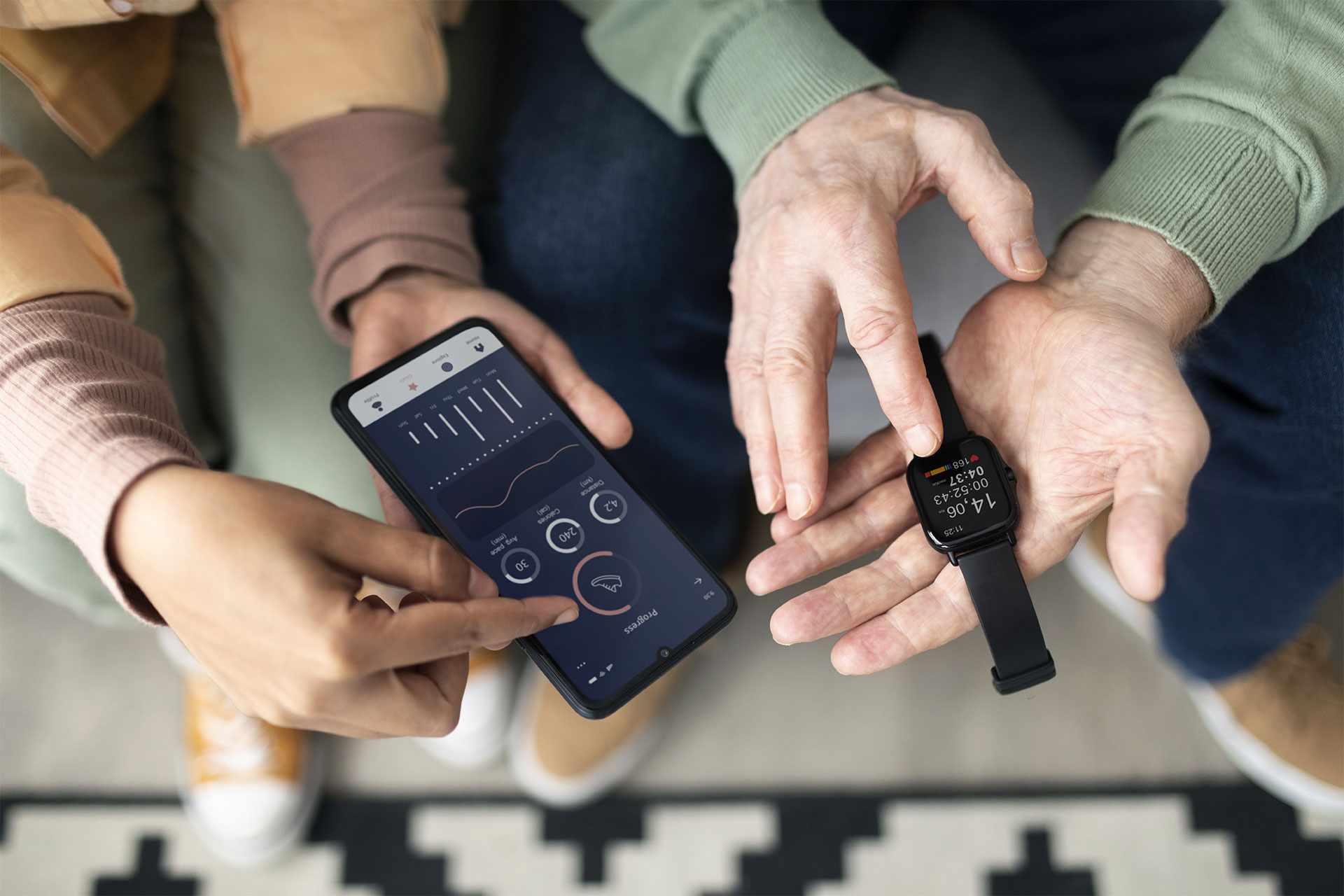Wearable Devices: Current Status and Opportunities in Pain Assessment and Management
In the fast-evolving landscape of mobile health technologies, wearable devices have emerged as potential game-changers in the realm of pain assessment and management. In this scenario there are new evidences. One of the most interesting article regarding the matter explores the groundbreaking work conducted by researchers Andrew Leroux, Tushar Sharma, Rachael Rzasa-Lynn, and Ciprian Crainiceanu, shedding light on the current status and opportunities presented by wearable devices in the dynamic field of pain research.
Source: Digit Biomark 2021;5:89–102 Published online: April 19, 2021
Title: Wearable Devices Revolutionize Pain Assessment and Management: Unraveling the Complexities
Researchers: Andrew Leroux, Tushar Sharma (Department of Biostatistics and Informatics, Colorado School of Public Health, Aurora, CO, USA); Rachael Rzasa-Lynn (Department of Anesthesiology, University of Colorado, Aurora, CO, USA); Ciprian Crainiceanu (Department of Biostatistics, Johns Hopkins University, Baltimore, MD, USA).
Chapter 1 – Wearable Devices in Mobile Health Technologies: The World Health Organization’s definition of mobile health technologies serves as a foundation for understanding the integration of wearables into healthcare practices. As smartphones and tablets pave the way for telemedicine, wearable devices such as accelerometers and heart monitors offer an unprecedented opportunity to actively monitor patients’ health. The widespread acceptance of wearables in mainstream culture, fueled by products like the Apple Watch and Fitbit, positions these devices as valuable tools for real-time health insights.
Chapter 2 – Pain: a Core Determinant of Quality of Life: Pain, as characterized by the International Association for the Study of Pain, transcends a mere sensory experience. Acknowledging pain as a biopsychosocial phenomenon underscores its pervasive impact on individuals’ quality of life. Chronic pain statistics underscore its prevalence, affecting millions and contributing significantly to the opioid epidemic. Pain’s intricate interplay with psychosocial factors, cognitive functions, and overall well-being establishes it as a core determinant of life quality.
Chapter 3 – Pain Assessment: Current Status and the Limits of Current Outcome Measures: This section critically assesses the current state of pain assessment, emphasizing the absence of objective measures in clinical practice. The reliance on self-reported scales and questionnaires, while standard, introduces subjective biases and limitations, particularly in specific populations. The discussion extends to the pressing need for objective biomarkers in pain research, exploring the potential of wearable devices to provide real-time, context-rich data. Insights from wearable accelerometers and EMA coupled with objective functional outcomes signal a paradigm shift in pain assessment, offering a glimpse into a future where objective measures complement or replace traditional subjective assessments.
Chapter 4 – Wearable Devices in Pain Research: A Paradigm Shift Towards Holistic Assessment
Wearable devices stand at the forefront of revolutionizing pain assessment, offering a profound understanding of physiological responses and temporal dynamics. The intricate interplay between pain and the autonomic nervous system highlights wearables’ potential to objectively capture the timing and intensity of pain episodes. While direct correlations between pain scores and wearable sensor data are limited, 16 identified studies since 2015 provide crucial insights.
Comparative studies between individuals with pain and healthy counterparts reveal nuanced activity patterns without clear associations with pain scores. Intervention studies, employing combined behavior and wearable strategies, yield mixed results, emphasizing the condition-specific effectiveness of such approaches.
Moving beyond physical activity, the integration of biosignals and Ecological Momentary Assessment (EMA) data emerges as a promising avenue to unravel the temporal patterns of chronic pain. Exploring the intricate relationship between sleep and pain, facilitated by accelerometers, adds another layer of understanding. The current separation of sleep and physical activity studies calls for integrated efforts to grasp the multidirectional causal relationship between pain, activity, and sleep.
In summary, the future of pain research with wearables involves expanding the scope of physiological measures, integrating diverse data sources, and gaining a comprehensive understanding of pain’s multifaceted relationship with physiological responses. This evolution promises to redefine pain assessment, ushering in a new era in patient care and research methodologies.
Expanding on the transformative role of wearables, the integration of various biosignals offers a deeper exploration of pain physiology. Accelerometry, while valuable, requires augmentation with physiological signals, such as heart rate variability (HRV), to enrich pain assessment. Recent studies showcasing the predictive potential of wearables during sickle cell pain crises underscore the importance of delving into biosignals associated with pain.
Beyond physical activity, the integration of diverse biosignals paves the way for objective pain endpoints. Early prediction of pain crises, reminiscent of predictive models in cardiology, emerges as a significant opportunity. Patient-centric studies, where individuals act as their own controls, become imperative, considering both pain and pain-free periods. Harmonizing wearable use with Ecological Momentary Assessment (EMA) data collection presents challenges, necessitating meticulous consideration of device parameters and questionnaire design.
Etiological classification (nociceptive, neuropathic, nociplastic) becomes a guiding principle, aiding researchers in identifying promising biosignals tailored to specific pain conditions. Conceptual challenges involving the complex interplay of pain, activity, and interventions underscore the need for just-in-time adaptive interventions. Standardizing visualizations and widgets ensures comparability and opens avenues from tracking historical trends to real-time personalized interventions.
Methodologically, challenges persist in handling high-dimensional, correlated wearable data. Multidimensional measures, amalgamating subjective and objective data, hold promise for clinical application and research outcomes. Bridging the transition from research to clinical practice gains momentum by offering patients valuable feedback and just-in-time adaptive interventions. The future envisions enhanced patient care, understanding pain in real-world scenarios through the amalgamation of wearable technologies and EMA. This holistic approach promises to redefine the landscape of pain research and patient-centric methodologies.



